 W
WArrias Battery, also known as Xemxija Battery or Pwales Left Battery, is an artillery battery in Xemxija, limits of St. Paul's Bay, Malta. It was built by the Order of Saint John in 1715–1716 as one of a series of coastal fortifications around the Maltese Islands. The battery still exists, although it has modern alterations, and it is used as a restaurant.
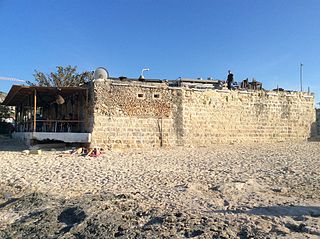 W
WBaħar iċ-Ċagħaq Redoubt is a redoubt in Baħar iċ-Ċagħaq, limits of Naxxar, Malta. It was built in 1715–1716 by the Order of Saint John as one of a series of coastal fortifications around the Maltese Islands. Today, the redoubt still exists and is in relatively good condition.
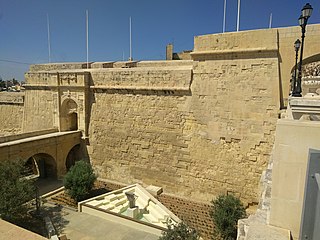 W
WThe fortifications of Birgu are a series of defensive walls and other fortifications which surround the city of Birgu, Malta. The first fortification to be built was Fort Saint Angelo in the Middle Ages, and the majority of the fortifications were built between the 16th and 18th centuries by the Order of Saint John. Most of the fortifications remain largely intact today.
 W
WBriconet Redoubt, also known as Marsaskala Redoubt or the Vendôme Entrenchment, is a redoubt in Marsaskala, Malta. It was built in 1715 by the Order of Saint John as one of a series of coastal fortifications around the Maltese Islands. Until recently, the redoubt was used as a police station.
 W
WBuġibba Battery, also known as Elbene Battery, was an artillery battery in Buġibba, limits of St. Paul's Bay, Malta. It was built in the 18th century, by the Order of Saint John, as one of a series of coastal fortifications around the coasts of the Maltese Islands. The battery no longer exists, but its rock-hewn ditch and some foundations can still be seen.
 W
WCaptain's Tower is a tower in Naxxar, Malta. It was built sometime after 1548 by the Order of Saint John. Today, the tower is in good condition.
 W
WCavalier Tower, also known as Qrendi Tower or Captain's Tower, and previously as Ellul Preziosi Tower, is a tower in the town of Qrendi, Malta. It was built in the late medieval or early Hospitaller period, and it is one of the oldest surviving towers in Malta.
 W
WFort Chambray or Fort Chambrai is a bastioned fort located in the precincts of Għajnsielem, on the island of Gozo, Malta. It was built in the mid-18th century by the Order of Saint John, in an area known as Ras it-Tafal, between the port of Mġarr and Xatt l-Aħmar. The fort was meant to be the citadel of a new city which was to replace the Cittadella as the island's capital, but this plan never materialized.
 W
WThe Cittadella, also known as the Castello, is the citadel of Victoria on the island of Gozo, Malta. The area has been inhabited since the Bronze Age, and the site now occupied by the Cittadella is believed to have been the acropolis of the Punic-Roman city of Gaulos or Glauconis Civitas.
 W
WThe Cottonera Lines, also known as the Valperga Lines, are a line of fortifications in Cospicua and Birgu, Malta. They were built in the 17th and 18th centuries to form the outer defences of the Three Cities of Birgu, Senglea and Cospicua. They surrounded an earlier line of fortifications, known as the Santa Margherita Lines.
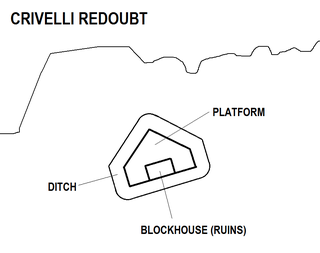 W
WCrivelli Redoubt, also known as Barriera Redoubt or Armier Redoubt, is a redoubt in Armier Bay, limits of Mellieħa, Malta. It was built by the Order of Saint John in 1715–1716 as one of a series of coastal fortifications around the Maltese Islands. Today, the redoubt is in good condition.
 W
WDellia Battery, also known as Vendôme Battery or Pwales Right Battery, was an artillery battery in Xemxija Bay, limits of St. Paul's Bay, Malta. It was built by the Order of Saint John in 1715 as one of a series of coastal fortifications around the coasts of the Maltese Islands. It was demolished in 1924, but the coats of arms and inscription which were located above the main entrance still exist and are now a monument.
 W
WThe Falca Lines, also known as the Falca Gap Entrenchment, are an infantry entrenchment in northern Malta, located on the boundary between Mġarr and St. Paul's Bay. The lines were built in the 18th century by the Order of Saint John, and today lie in ruins.
 W
WFerretti Battery, also known as Qajjenza Battery or Saint George's Battery, is an artillery battery in the village of Qajjenza, within the limits of Birżebbuġa, in Malta. It was built by the Order of Saint John between 1715 and 1716 as one of a series of coastal fortifications around the coasts of the Maltese Islands. A restaurant exists within the walls of the battery, serving Mediterranean cuisine.
 W
WThe Floriana Lines are a line of fortifications in Floriana, Malta, which surround the fortifications of Valletta and form the capital city's outer defences. Construction of the lines began in 1636 and they were named after the military engineer who designed them, Pietro Paolo Floriani. The Floriana Lines were modified throughout the course of the 17th and 18th centuries, and they saw use during the French blockade of 1798–1800. Today, the fortifications are still largely intact but rather dilapidated and in need of restoration.
 W
WFort San Lucian, also known as Saint Lucian Tower or Fort Rohan, is a large bastioned watchtower and polygonal fort in Marsaxlokk, Malta. The original tower was built by the Order of Saint John between 1610 and 1611, being the second of six Wignacourt towers.
 W
WGarzes Tower, also known as Saint Martin's Tower, was a watchtower built in Mġarr, Gozo by the Order of Saint John in 1605. It was named after Martin Garzez, the Grand Master who financed its construction, even though it was eventually built after his death during the Magistry of Alof de Wignacourt. The tower was demolished in the 19th century, some remains were reused for the building of a bridge, and the site was developed with a hotel.
 W
WLembi Battery, also known as Qala Lembi Battery, was an artillery battery in Sliema, Malta. It was built in 1757 by the Order of Saint John, and was considered as an outwork of Fort Manoel. The battery became obsolete with the construction of Fort Tigné in 1795, and it was briefly used as a summer residence before being demolished. In the 1870s, Cambridge Battery was built close to the site of Lembi Battery.
 W
WFort Manoel is a star fort on Manoel Island in Gżira, Malta. It was built in the 18th century by the Order of Saint John, during the reign of Grand Master António Manoel de Vilhena, after whom it is named. Fort Manoel is located to the north west of Valletta, and commands Marsamxett Harbour and the anchorage of Sliema Creek. The fort is an example of Baroque architecture, and it was designed with both functionality and aesthetics in mind.
 W
WThe fortifications of Mdina are a series of defensive walls which surround the former capital city of Mdina, Malta. The city was founded as Maleth by the Phoenicians in around the 8th century BC, and it later became part of the Roman Empire under the name Melite. The ancient city was surrounded by walls, but very few remains of these have survived.
 W
WMistra Battery, formerly also known as Despirasse Battery, is an artillery battery in Mistra Bay, Mellieħa, Malta. It was built by the Order of Saint John in the 18th century as one of a series of coastal fortifications around the coasts of the Maltese Islands.
 W
WThe Naxxar Entrenchment is an infantry entrenchment in Naxxar, Malta, which was built in the 18th century by the Order of Saint John. Today, it lies in ruins but is still the best preserved inland entrenchment in Malta. It is a list monument of the NICPMI.
 W
WPinto Battery, also known as Għżira Battery or Kechakara Battery, is a former artillery battery in Birżebbuġa, Malta. It was built by the Order of Saint John between 1715 and 1716 as one of a series of coastal fortifications around the coasts of the Maltese Islands. The battery has been heavily altered over time, and the blockhouse now houses a bar and a garage, while the gun platform and parapet have been largely destroyed, with only the general outline still visible.
 W
WQalet Marku Battery, also known as D'Orbeau Battery, was an artillery battery in Baħar iċ-Ċagħaq, limits of Naxxar, Malta. It was built in 1715–1716 by the Order of Saint John as one of a series of coastal fortifications around the Maltese Islands. The battery has been largely destroyed, but some remains can still be seen.
 W
WQalet Marku Redoubt was a redoubt in the limits of Naxxar, Malta. It was built in 1715–1716 by the Order of Saint John as one of a series of coastal fortifications around the Maltese Islands. It was demolished to make way for the coast road, but its remains are possibly still buried under the road.
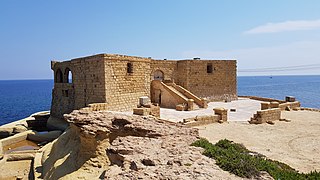 W
WQolla l-Bajda Battery is an artillery battery in Żebbuġ, Gozo, Malta. It was built by the Order of Saint John between 1715 and 1716 as one of a series of coastal fortifications around the coasts of the Maltese Islands. It retained its original layout until the late 1970s, when it was converted into a discothèque and snack bar known as Rook and major alterations were made to the battery. The building is now abandoned and in a dilapidated state, being in the midst of a legal battle between the government and a private company.
 W
WQortin Redoubt, also known as Eskalar Redoubt, is a redoubt in the limits of Mellieħa, Malta. It was built by the Order of Saint John in 1715–1716 as one of a series of coastal fortifications around the Maltese Islands. Today, the redoubt still exists, but it has some modern modifications.
 W
WRamla Left Battery, also known as Belancourt Battery or Xagħra Battery, was an artillery battery in Ramla Bay, limits of Xagħra on the island of Gozo, Malta. It was built by the Order of Saint John in 1715–1716 as one of a series of coastal fortifications around the Maltese Islands. The battery now lies in ruins.
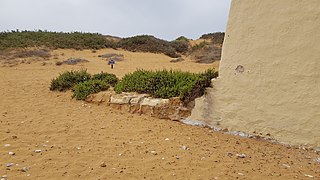 W
WRamla Redoubt, also known as Vendôme Redoubt, was a redoubt in Ramla Bay, limits of Xagħra on the island of Gozo, Malta. It was built by the Order of Saint John in 1715–1716 as one of a series of coastal fortifications around the Maltese Islands. The redoubt no longer exists, but a small part of its foundations are still visible.
 W
WRamla Right Battery, also known as Gironda Battery or Nadur Battery, was an artillery battery in Ramla Bay, limits of Nadur on the island of Gozo, Malta. It was built by the Order of Saint John in 1715–1716 as one of a series of coastal fortifications around the Maltese Islands. The battery now lies in ruins.
 W
WFort Ricasoli is a bastioned fort in Kalkara, Malta, which was built by the Order of Saint John between 1670 and 1698. The fort occupies a promontory known as Gallows' Point and the north shore of Rinella Bay, commanding the entrance to the Grand Harbour along with Fort Saint Elmo. It is not only the largest fort in Malta but also the largest in Europe, and it has been on the tentative list of UNESCO World Heritage Sites since 1998, as part of the Knights' Fortifications around the Harbours of Malta.
 W
WRiħama Battery is an artillery battery in Marsaskala, Malta. It was built by the Order of Saint John in 1714–1716 as one of a series of coastal fortifications around the coasts of the Maltese Islands. The battery still exists, although it is in a dilapidated state with part of it having collapsed.
 W
WFort St. Angelo is a bastioned fort in Birgu, Malta, located at the centre of the Grand Harbour. It was originally built in the medieval period as a castle called the Castrum Maris. It was rebuilt by the Order of Saint John as a bastioned fort called Fort Saint Angelo between the 1530s and the 1560s, and it is best known for its role as the Order's headquarters during the Great Siege of Malta of 1565. A major reconstruction to designs of Carlos de Grunenbergh took place in the 1690s, giving the fort its current appearance.
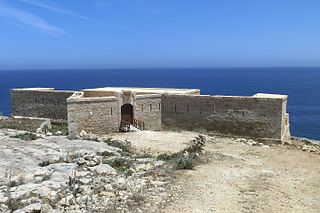 W
WSaint Anthony's Battery is an artillery battery in Qala, Gozo, Malta. It was built by the Order of Saint John between 1731 and 1732 as one of a series of coastal fortifications around the coasts of the Maltese Islands. It is one of only two surviving batteries on Gozo, the other one being Qolla l-Bajda Battery in Żebbuġ.
 W
WFort Saint Elmo is a star fort in Valletta, Malta. It stands on the seaward shore of the Sciberras Peninsula that divides Marsamxett Harbour from Grand Harbour, and commands the entrances to both harbours along with Fort Tigné and Fort Ricasoli. It is best known for its role in the Great Siege of Malta of 1565.
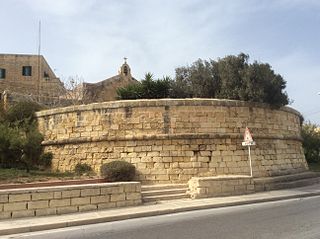 W
WSaint George Redoubt is a redoubt in Birżebbuġa, Malta. It was built in 1714–1716 by the Order of Saint John as one of a series of coastal fortifications around the Maltese Islands, and it got its name from a chapel dedicated to St. George which was incorporated within the redoubt. Today, the redoubt and chapel still exist and they are in good condition.
 W
WSaint James Cavalier is a 16th-century cavalier in Valletta, Malta, which was built by the Order of St John. It overlooks St James' Bastion, a large obtuse-angled bastion forming part of the Valletta Land Front. St James was one of nine planned cavaliers in the city, although eventually only two were built, the other one being the identical Saint John's Cavalier. It was designed by the Italian military engineer Francesco Laparelli, while its construction was overseen by his Maltese assistant Girolamo Cassar. St James Cavalier never saw use in any military conflict, but it played a role during the Rising of the Priests in 1775.
 W
WSaint John's Cavalier is a 16th-century cavalier in Valletta, Malta, which was built by the Order of St. John. It overlooks St. John's Bastion, a large obtuse-angled bastion forming part of the Valletta Land Front. St. John was one of nine planned cavaliers in the city, although eventually only two were built, the other one being the identical Saint James Cavalier. It was designed by the Italian military engineer Francesco Laparelli, while its construction was overseen by his Maltese assistant Girolamo Cassar.
 W
WSaint Mary's Battery, also known as Comino Battery, is an artillery battery on the island of Comino in Malta. It was built by the Order of Saint John between 1715 and 1716 as one of a series of coastal fortifications around the coasts of the Maltese Islands.
 W
WFort Saint Michael was a small fort in the land front of the city of Senglea, Malta. It was originally built in the 1552 and it played a significant role in the Great Siege of Malta of 1565. Following the siege, it was rebuilt as Saint Michael Cavalier, and it was completed in 1581. The cavalier was partially demolished in the 20th century, and only a part of its base still exists today.
 W
WThe Saluting Battery is an artillery battery in Valletta, Malta. It was constructed in the 16th century by the Order of Saint John, on or near the site of an Ottoman battery from the Great Siege of Malta. The battery forms the lower tier of St. Peter & Paul Bastion of the Valletta Land Front, located below the Upper Barrakka Gardens and overlooking Fort St. Angelo and the rest of the Grand Harbour.
 W
WFort San Salvatore, also known as Fort Salvatore, is a retrenched fort in Birgu, Malta. It was built in 1724 on one of the bastions of the Cottonera Lines. It was used as a prisoner-of-war camp during the Greek War of Independence and World War I, and as an internment camp and kerosene depot in World War II.
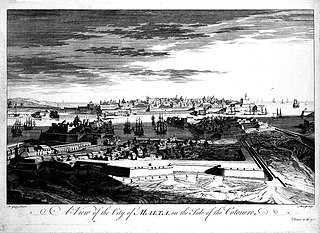 W
WThe Santa Margherita Lines, also known as the Firenzuola Lines, are a line of fortifications in Cospicua, Malta. They were built in the 17th and 18th centuries to protect the land front defences of the cities of Birgu and Senglea. A second line of fortifications, known as the Cottonera Lines, was later built around the Santa Margherita Lines, while the city of Cospicua was founded in the 18th century within the Santa Margherita and Cottonera Lines.
 W
WThe fortifications of Senglea are a series of defensive walls and other fortifications which surround the city of Senglea, Malta. The first fortification to be built was Fort Saint Michael in 1552, and the majority of the fortifications were built over the next decade when it was founded by Grand Master Claude de la Sengle. Modifications continued until the 18th century, but large parts of the fortifications were demolished between the 19th and 20th centuries. Today, all that remain of Senglea's fortifications are the seaward bastions and part of the land front.
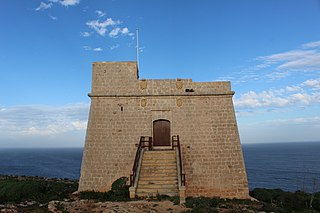 W
WSopu Tower, also known as Isopu Tower, San Blas Tower or Torre Nuova, is a small watchtower situated on the cliff between San Blas and Daħlet Qorrot in Nadur, Gozo, Malta.
 W
WClose to the Valletta Grand Harbour, St. Barbara Bastion is a flat-faced bastion with a low parapet overlooking the Grand Harbour Area, Valletta, Malta.
 W
WTal-Bir Redoubt, also known as Wied Musa Redoubt, is a redoubt in the limits of Mellieħa, Malta. It was built by the Order of Saint John in 1715–1716 as one of a series of coastal fortifications around the Maltese Islands. Today, the redoubt lies in ruins.
 W
WTal-Wejter Tower is a tower in Birkirkara, Malta, which was built in the early 18th century by the Order of Saint John. It is also known locally as it-Torri tal-Misħun, a reference to its machicolations which are known as galleriji tal-misħun in Maltese. The tower was partially demolished in the 1960s, but it was later rebuilt. Today, it is in a rather dilapidated state.
 W
WFort Tigné is a polygonal fort in Tigné Point, Sliema, Malta. It was built by the Order of Saint John between 1793 and 1795 to protect the entrance to Marsamxett Harbour, and it is one of the oldest polygonal forts in the world. The fort was extensively altered by the British in the 19th century, and it remained in use by the military until 1979.
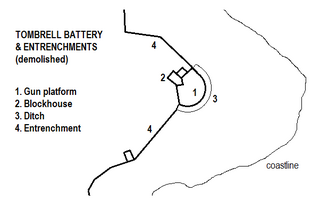 W
WTombrell Battery was an artillery battery in Delimara, Marsaxlokk, Malta. It was built in around 1722 by the Order of Saint John as one of a series of coastal fortifications around the coasts of the Maltese Islands. The battery was demolished at the end of the 19th century, and only its rock-hewn ditch survives today.
 W
WThe Torre dello Standardo is a tower in Mdina, Malta, forming part of the city's fortifications. It was built by the Order of St. John between 1725 and 1726, on the site of an earlier tower, and its purpose was to communicate signals between Mdina and the rest of Malta. Today, the tower is in good condition, and it serves as a tourist information centre and for occasional cultural events.
 W
WThe fortifications of Valletta are a series of defensive walls and other fortifications which surround Valletta, the capital city of Malta. The first fortification to be built was Fort Saint Elmo in 1552, but the fortifications of the city proper began to be built in 1566 when it was founded by Grand Master Jean de Valette. Modifications were made throughout the following centuries, with the last major addition being Fort Lascaris which was completed in 1856. Most of the fortifications remain largely intact today.
 W
WVendôme Battery, also known as Ta' Maċċu Battery, is an artillery battery near Armier Bay, limits of Mellieħa, Malta. It was built by the Order of Saint John in 1715–1716 as one of a series of coastal fortifications around the Maltese Islands.
 W
WVendôme Tower is a tour-reduit in Marsaxlokk, Malta. It was built by the Order of Saint John in 1715 as one of a series of coastal fortifications around the coasts of the Maltese Islands. It is the only surviving tour-reduit in Malta. Today, Vendôme Tower houses the headquarters of Marsaxlokk F.C.
 W
WWestreme Battery, also known as ir-Rasus Battery or Mellieħa Right Battery, is a former artillery battery in Mellieħa, Malta. It was built by the Order of Saint John in 1715–1716 as one of a series of coastal fortifications around the coasts of the Maltese Islands.
 W
WWied Musa Battery, also known as Swatar Battery, is a former artillery battery in Marfa, limits of Mellieħa, Malta. It was built by the Order of Saint John in 1714–1716 as one of a series of coastal fortifications around the Maltese Islands.
 W
WWilġa Battery, also known as Saint James Battery or Zondodari Battery, is a former artillery battery in Delimara, Marsaxlokk, Malta. It was built in 1714 by the Order of Saint John as one of a series of coastal fortifications around the coasts of the Maltese Islands. Today, the battery's gun platform is largely destroyed, but its blockhouse remains intact and has been restored.
 W
WXimenes Redoubt is a redoubt in Salina Bay, Naxxar, Malta. It was built by the Order of Saint John in 1715-1716 as one of a series of coastal fortifications around the Maltese Islands, and it was originally called Salina Right Redoubt. Two warehouses were grafted on the redoubt in the second half of the 18th century so as to store salt from nearby salt pans. It was eventually renamed after Grand Master Francisco Ximenes de Texada, whose coat of arms can be seen on one of the warehouses. The redoubt and warehouses have been recently restored.